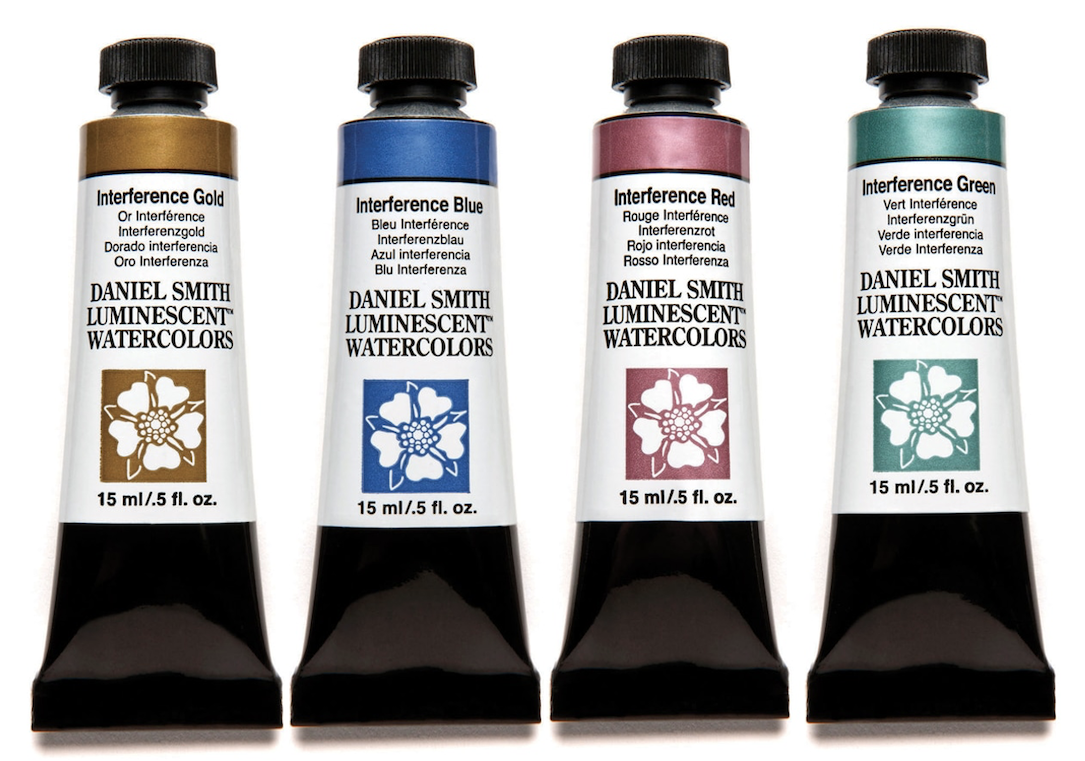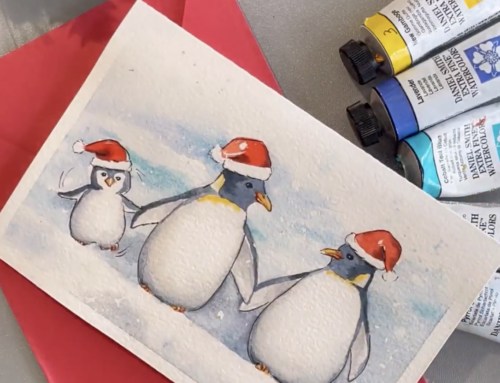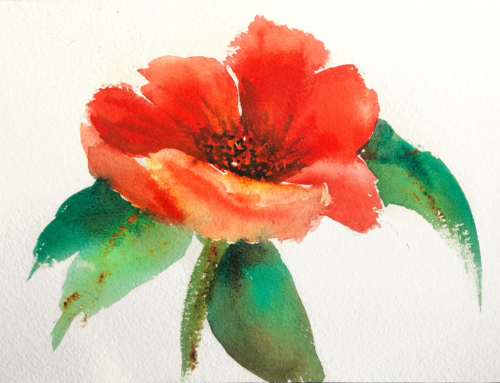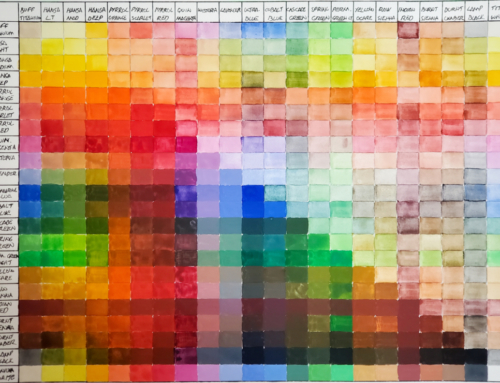Share:
Interference watercolors add depth and dimension to my paintings. For example, my flower petals in this piece have an enhanced color quality – plus they just sparkle!
I picked a colorful bunch of flowers growing near some railroad tracks. I had to finish my painting quickly before the flowers wilted. I looked at the flowers and vase through a small square mask to decide how I would crop the arrangement for the painting.
My palette for the sunflowers had Hansa Yellow Light, Hansa Yellow Medium and Interference Gold, plus I used Moonglow for the centers of the flowers. For the trumpet flowers, I used Organic Vermilion, Hansa Yellow Medium, Interference Red and Interference Gold. I mixed Hansa Yellow Light, Ultramarine Blue and Interference Green for the leaves. Adding a touch of Organic Vermilion to the mix gives a duller green. My background colors were Ultramarine Blue and Interference Gold for the wet on wet wash, then I added Interference Blue later.
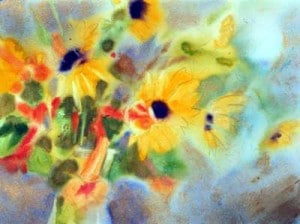
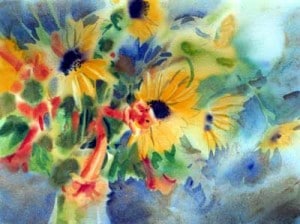

I pre-wet the front and back of my watercolor paper, which I then placed on a smooth board. I applied my first washes of color wet on wet. Be sure you have enough paint ready, because the paper can dry out if you have to take extra time to squeeze and remix colors. Besides imparting a sheen, the interference colors also make the regular colors behave in a more controlled manner with wet on wet applications. To avoid back runs and water marks around the edges while drying, I placed an absorbent flat cotton rag under the wet painting on the board. Once this first wash was dry, I penciled in some lines for guidance.
Using the same colors as before, only in darker shades, I negative painted the flowers, leaves and vase by filling in the space around them first. I added darker shades of orange and yellow to the flowers for form. I continued negative painting and adding details. The pollen in the center of the sunflowers is a combination of Interference Gold and Hansa Yellow Light used closer to mass tone. The beautiful blues were also painted opaquely. The blue and yellow enhance one another and are particularly pleasing together because the two colors are complements.
Visit the FAQ to learn more about the four different types of Luminescent Watercolors – Iridescent, Interference, Duochrome and Pearlescent.

